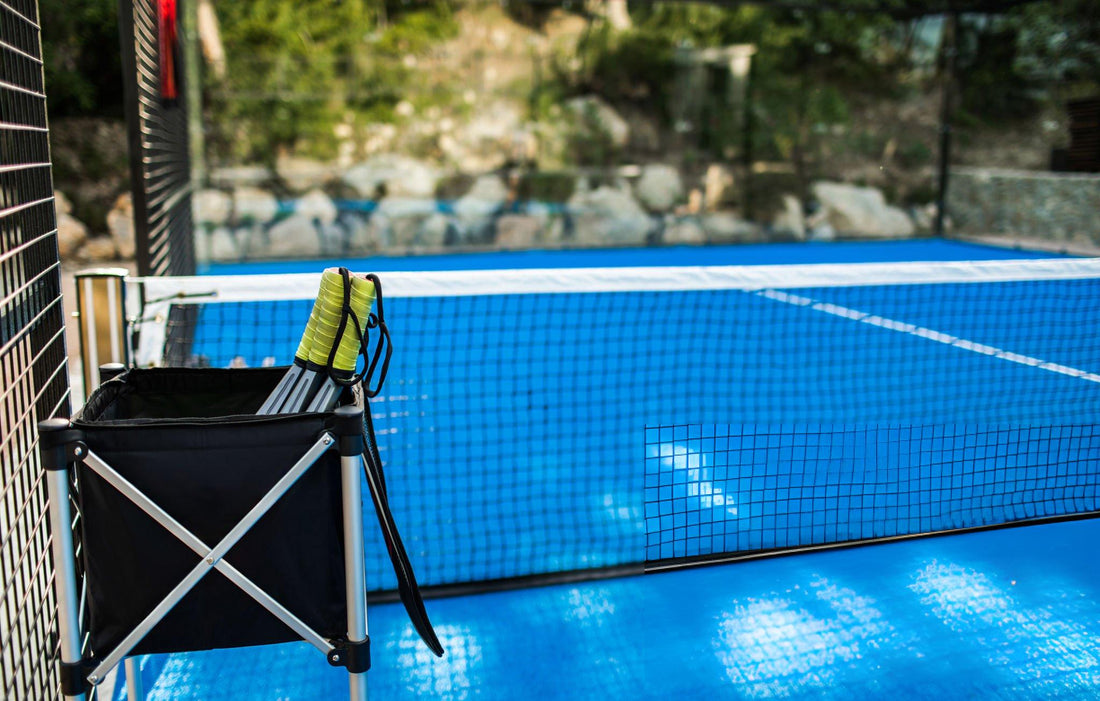Across Karachi, the sound of padel matches has started to blend into the sports scene in a big way. More players are trying out the game each week, and courts are booking up fast. With that kind of use, it’s worth paying attention to how well a padel court is actually holding up. Like any surface that takes a beating from Karachi’s heat and regular footwork, these courts don’t stay perfect forever.
Recognizing when a court needs some simple care can keep matches smooth and lower the risk of injury. And if you’ve ever hesitated mid-point because of a wobbly net or blotchy line, you already know how much court condition matters. Whether you run a court or just play at one regularly, spotting signs of wear early keeps things safer and more enjoyable.
It doesn’t take much to stay ahead of trouble on a padel court in Karachi. A closer look once in a while can go a long way. Below are the signs we keep an eye on, especially as the season heats up and players pack more games into each day.
Cracks and Uneven Surfaces
The surface is where play starts, and it’s also where many problems begin. When a court starts to crack, even a little, footwork gets shaky fast. Tiny surface splits can trip players during breaks or dashes, especially for those just learning how to move in tight corners. Turf patches can fray or dent from repeated slides or sudden stops. Hardcourt versions aren’t off the hook either. Those can develop chipped edges or underfoot bumps that throw off timing.
In Karachi, extreme summer heat and drifting dust wear surfaces down more than many expect. Heat softens glue layers, winds push sand into seams, and eventually, the court loses its clean feel. This is often most noticeable near net zones or along common running paths. When players’ pace or grip seems off, it’s wise to check those areas first.
Courts that look fine from far away often carry problems up close. It’s not always about damage from a single event, but steady motion that wears things out without making much noise.
One feature that matters: many high-quality padel courts in Karachi use UV-treated synthetic turf for longer-lasting color and traction. Still, even advanced turf needs regular checks.
Loose or Damaged Nets
Even a great rally can lose rhythm if the net sags or sways at the wrong time. One sign we see often is uneven net tension, tight on one end and too loose on the other. That can mess with judgment and shot height, especially near tap volleys or corner cuts. Nets can stretch over time, and after enough high smashes or awkward pulls, things slip out of place.
Then there’s the wear on the edges. Karachi clubs with daily schedules will notice net fray earlier than quieter locations. When cords start to split or the frame begins to shift, players begin to overcorrect their swings, thinking they misread a bounce when it’s the net alignment at fault.
Routine tension checks and quick looks after busy weekends help catch trouble early. Consistency in net bounce and shape keeps games sharp and player focus locked.
Worn Paint and Fading Court Lines
Painted lines do more than mark boundaries. They give players confidence in their placement and reduce disputes during tight plays. But after long sessions under Karachi’s sun, line paint can fade fast. We’ve seen courts where out lines blur into the surface or service zones lose all crispness. With dust layer buildup, these lines can dull before they fully wear off. It’s enough to cause second guesses mid-point.
Sun intensity plays a role, but so does foot traffic. Areas like the baseline wear quicker because of repeated foot drag. Players relying on quick pivots or sideways steps feel the loss of texture the most. Sometimes repainting lines is enough. Other times, if the base surface has already worn thin or started to peel, redoing the base becomes necessary before lines can last.
Clear lines aren’t just about looks. They guide instincts and keep pacing clean, especially during fast volleys or tight returns. Faded ones slow everything down.
Some premium padel court systems in Karachi feature anti-slip surface coatings, which help lines stay visible and footing stay sure even in humid or dusty conditions.
Unstable Fencing and Safety Zones
Fences matter more than many think. A well-framed court lets players chase balls fully. But when fences lean or wobble, it makes people hold back. Rusty sections or shifting poles are early warning signs. They might stand through today’s match but not tomorrow’s.
In Karachi, fencing often takes hits from both play and outside use. Clubs with tight walkways or close side entries see elbow bumps or gear bags brushing against structures all day. That gradual pressure stacks up. Noticing a slight rattle or flex means it’s time to pause and check stability.
Safety zones are often overlooked too. If space is too tight or padding worn thin near fence edges, players can end up brushing hard surfaces mid-match. When matches run back-to-back and audiences lean in close, keeping clear zones becomes even trickier.
Strong fencing isn’t just there to block balls. It backs up aggressive movement and gives players the freedom to play harder.
Lighting and Play Timing Issues
Court condition doesn’t end at your feet. Good lighting shapes how late you can play, how visible the ball stays, and how safe movement feels as shadows stretch. Karachi’s evening games have grown, especially with the heat driving players toward sunset time slots. But dim or misaligned lights can cut those sessions short.
We often see lights that buzz or flicker just enough to distract, but not enough to prompt repair. The problem builds up slowly until teams skip the evening match or tighten up shots out of caution. Light reflections on glossy surfaces or uneven glare in the corners can also shift where players like to serve or defend.
As padel gets more popular in the area, scheduling extends later into the night. Reliable lighting keeps those time slots playable and safe. Skipping corners during a match or misjudging a standout because of flickering shadows introduces more risk than most realize.
Keep Your Court Match-Ready Year-Round
Karachi’s climate makes fast repairs more important than big fixes. The heat moves in early, the dust comes with it, and with steady play, a clean court can start showing wear in a matter of weeks. But major damage rarely shows up out of nowhere. It builds up from small signs that go unchecked.
Cracks underfoot, sagging nets, or fuzzy lines aren’t always deal breakers on their own. But when they pile up, they pull away from the feel of the game, break flow, and sometimes end play early. By watching out for these signals before they grow, play stays smoother, and courts hold up longer between repairs.
For padel players in Karachi, staying aware of these details keeps the experience clear and fun. Whether it’s a public space, club-owned surface, or backyard setup, any court that gets regular play needs regular eyes on it. And the more we catch early, the more the game stays about the action, not the background.
At Tornado Sports Company, we’ve seen how a well-kept surface can turn a quick match into a full-on session, especially in a city where playing conditions shift fast. Whether you swing competitively or play just to stay active, having the right setup makes a real difference.
When it’s time to update gear that fits your favorite padel court in Karachi, we’ve got dependable options built to last round after round. Reach out anytime and we’ll help you figure out what works best for your next session.

